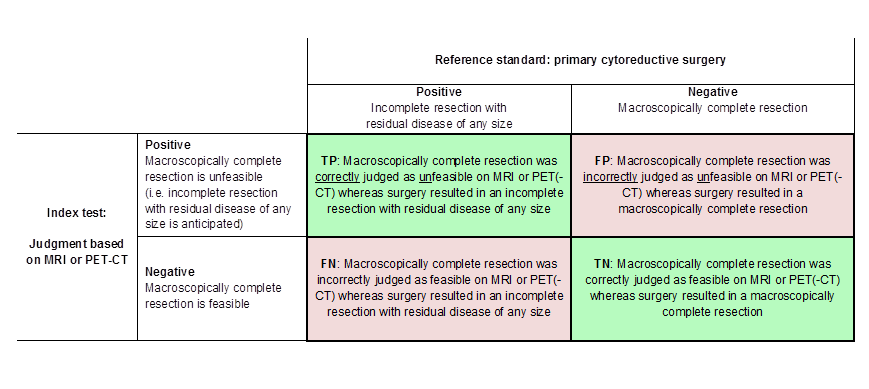Contenido relacionado
Revisiones y protocolos relacionados
Bas Vaarwerk, Willemijn B Breunis, Lianne M Haveman, Bart de Keizer, Nina Jehanno, Lise Borgwardt, Rick R van Rijn, Henk van den Berg, Jérémie F Cohen, Elvira C van Dalen, Johannes HM Merks | 9 noviembre 2021
Jacqueline Dinnes, Lavinia Ferrante di Ruffano, Yemisi Takwoingi, Seau Tak Cheung, Paul Nathan, Rubeta N Matin, Naomi Chuchu, Sue Ann Chan, Alana Durack, Susan E Bayliss, Abha Gulati, Lopa Patel, Clare Davenport, Kathie Godfrey, Manil Subesinghe, Zoe Traill, Jonathan J Deeks, Hywel C Williams, Cochrane Skin Cancer Diagnostic Test Accuracy Group | 1 julio 2019
Elly Brockbank, Fani Kokka, Andrew Bryant, Christophe Pomel, Karina Reynolds | 28 marzo 2013
Victoria B Allen, Kurinchi Selvan Gurusamy, Yemisi Takwoingi, Amun Kalia, Brian R Davidson | 6 julio 2016
Nigel D'Souza, Georgina Hicks, Richard Beable, Antony Higginson, Bo Rud | 14 diciembre 2021
Mia Schmidt‐Hansen, David R Baldwin, Elise Hasler, Javier Zamora, Víctor Abraira, Marta Roqué i Figuls | 13 noviembre 2014
Michael D Jenkinson, Damiano Giuseppe Barone, Andrew Bryant, Luke Vale, Helen Bulbeck, Theresa A Lawrie, Michael G Hart, Colin Watts | 22 enero 2018
Lawrence MJ Best, Vishal Rawji, Stephen P Pereira, Brian R Davidson, Kurinchi Selvan Gurusamy | 17 abril 2017
Nadja Smailagica, Marco Vacante, Chris Hyde, Steven Martin, Obioha Ukoumunne, Christos Sachpekidis | 28 enero 2015
Vicki Nisenblat, Patrick MM Bossuyt, Cindy Farquhar, Neil Johnson, M Louise Hull | 26 febrero 2016











